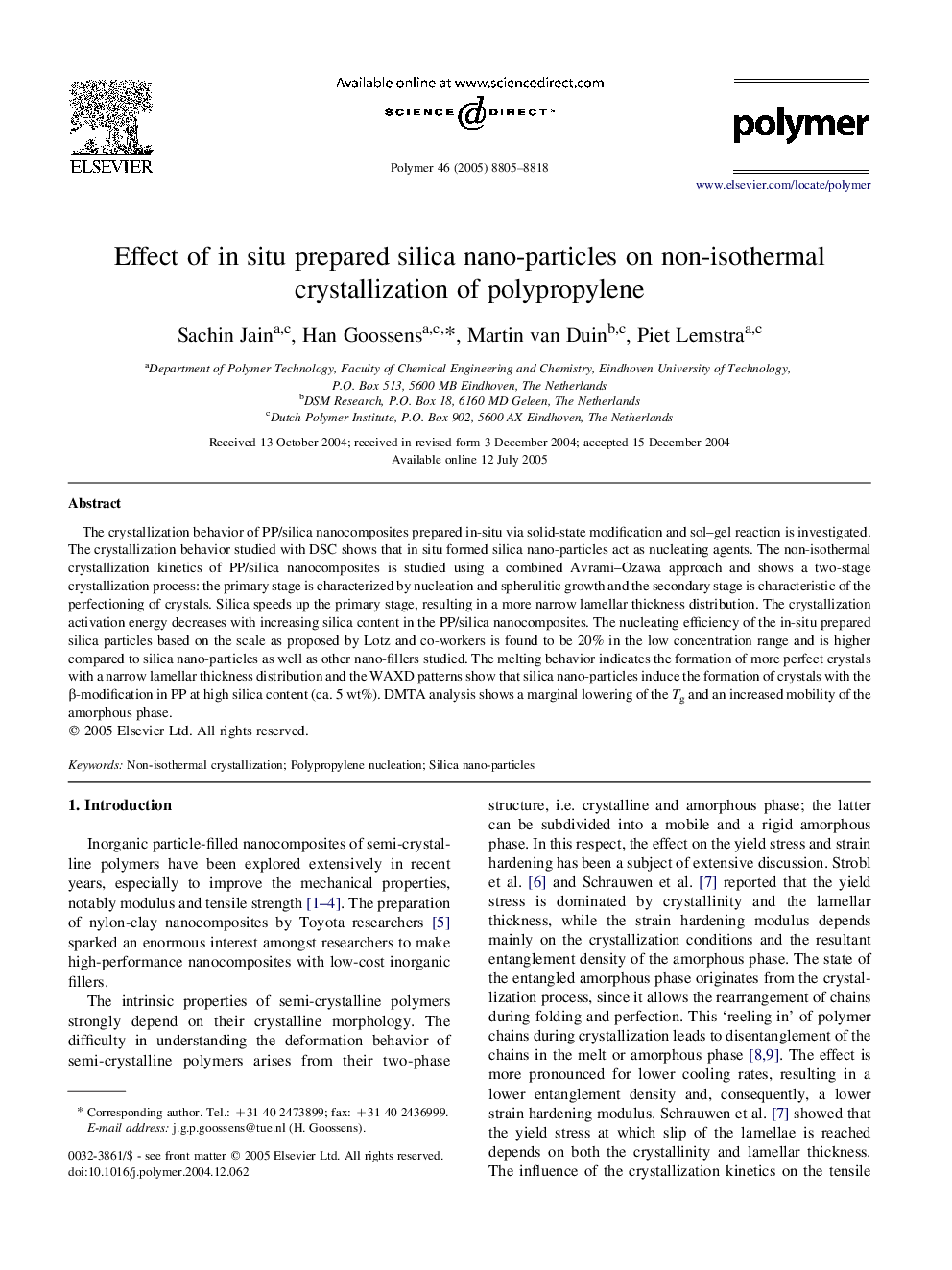| Article ID | Journal | Published Year | Pages | File Type |
|---|---|---|---|---|
| 5190571 | Polymer | 2005 | 14 Pages |
Abstract
The crystallization behavior of PP/silica nanocomposites prepared in-situ via solid-state modification and sol-gel reaction is investigated. The crystallization behavior studied with DSC shows that in situ formed silica nano-particles act as nucleating agents. The non-isothermal crystallization kinetics of PP/silica nanocomposites is studied using a combined Avrami-Ozawa approach and shows a two-stage crystallization process: the primary stage is characterized by nucleation and spherulitic growth and the secondary stage is characteristic of the perfectioning of crystals. Silica speeds up the primary stage, resulting in a more narrow lamellar thickness distribution. The crystallization activation energy decreases with increasing silica content in the PP/silica nanocomposites. The nucleating efficiency of the in-situ prepared silica particles based on the scale as proposed by Lotz and co-workers is found to be 20% in the low concentration range and is higher compared to silica nano-particles as well as other nano-fillers studied. The melting behavior indicates the formation of more perfect crystals with a narrow lamellar thickness distribution and the WAXD patterns show that silica nano-particles induce the formation of crystals with the β-modification in PP at high silica content (ca. 5 wt%). DMTA analysis shows a marginal lowering of the Tg and an increased mobility of the amorphous phase.
Related Topics
Physical Sciences and Engineering
Chemistry
Organic Chemistry
Authors
Sachin Jain, Han Goossens, Martin van Duin, Piet Lemstra,
